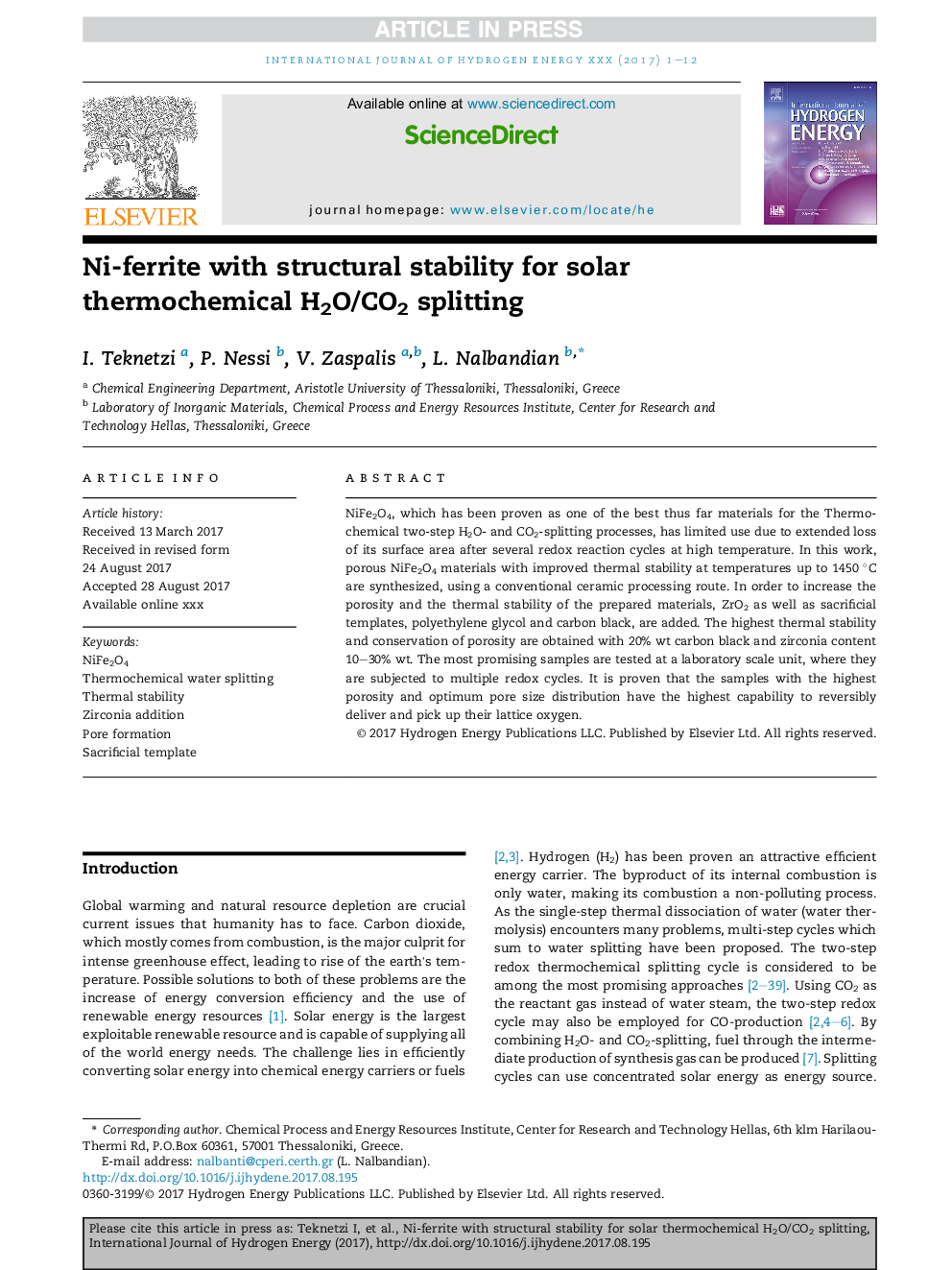| Article ID | Journal | Published Year | Pages | File Type |
|---|---|---|---|---|
| 5145059 | International Journal of Hydrogen Energy | 2017 | 12 Pages |
Abstract
NiFe2O4, which has been proven as one of the best thus far materials for the Thermochemical two-step H2O- and CO2-splitting processes, has limited use due to extended loss of its surface area after several redox reaction cycles at high temperature. In this work, porous NiFe2O4 materials with improved thermal stability at temperatures up to 1450 °C are synthesized, using a conventional ceramic processing route. In order to increase the porosity and the thermal stability of the prepared materials, ZrO2 as well as sacrificial templates, polyethylene glycol and carbon black, are added. The highest thermal stability and conservation of porosity are obtained with 20% wt carbon black and zirconia content 10-30% wt. The most promising samples are tested at a laboratory scale unit, where they are subjected to multiple redox cycles. It is proven that the samples with the highest porosity and optimum pore size distribution have the highest capability to reversibly deliver and pick up their lattice oxygen.
Related Topics
Physical Sciences and Engineering
Chemistry
Electrochemistry
Authors
I. Teknetzi, P. Nessi, V. Zaspalis, L. Nalbandian,
